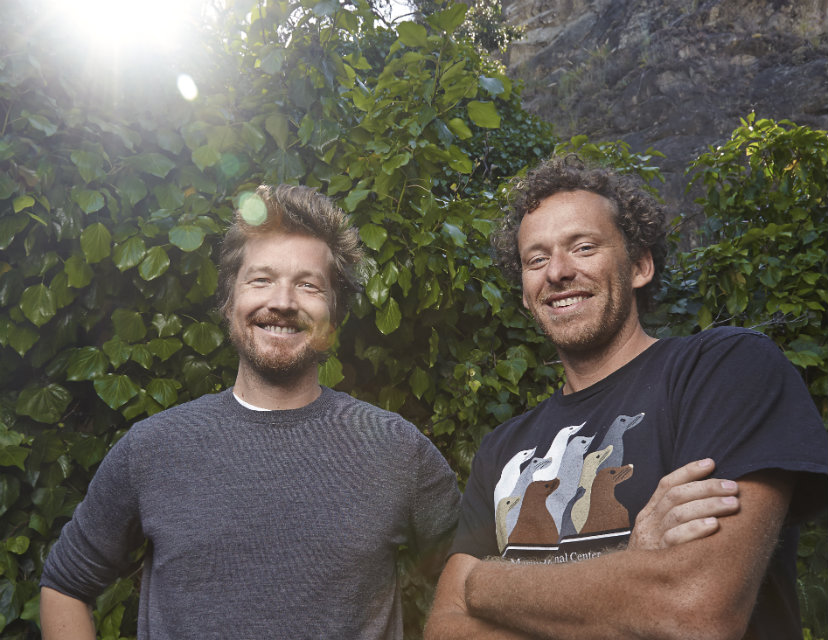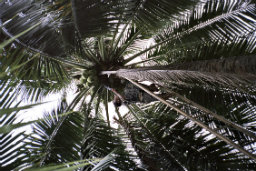
Harmless Harvest Coconut Water
Douglas Riboud and Justin Guilbert are the two young entrepreneurs behind the successful coconut water brand Harmless Harvest
It is time to shun once and for all your chemical sodas and sugary drinks.
It is time to enjoy the electrolyte-laden bliss of Harmless Harvest Coconut Water.
Reenergizing, totally natural (no added sugars, no preservatives, no concentrates), Harmless Harvest is super fresh, raw and organic. And since we tried it, we went coco-nuts for it!
We interviewed Douglas Riboud and Justin Guilbert, the two young entrepreneurs based in San Francisco who came up with this drink and learn more about their exciting and successful project.
Clémence von Mueffling: How did the adventure start?
Justin Guilbert: Douglas and I have been friends for many years. We’d been talking for a while about progressive business models, finally decided to stop talking and start doing. We both quit our corporate jobs and started Harmless Harvest in 2009. We set out to create a business that brought our beliefs in positive consumerism and natural capitalism to life. With our ecosystem-based business model, we care about the long-term welfare of all the stakeholders in our company, from plant to shelf. This means that by focusing on the benefit of others (soil, farmer, consumer) you obtain a good or service that outcompetes conventional business (maximizing your company’s return). The coconut water industry appeared to be a prime contender to demonstrate this concept. It was a long process, with many failures, that taught us about stepping from theory into reality. As the first company to offer a 100% Raw & Organic Coconut Water in 2011, we started to see if putting our resources into the making, rather than marketing, of our beverage would work out. So far, the response has been overwhelming.
This is where the ecosystem-based business model kicks in. You have to value the plant, the community, and all of your stakeholders to get the final product right.
CvM: What makes you so unique compared to others?
JG: The differences come first and foremost from the quality of the raw material – the coconut; regardless of how capable you are, a bad orange makes bad freshly-squeezed orange juice.
Then, the challenge was to develop a proprietary technique to keep processing to a minimum.
We are part of the pioneers of high pressure processing (HPP) for juices and have expanded on a seemingly endless number of minute technical details to achieve one thing: keeping the coconut water the way it was in the first place.
We use only a unique variety of organic coconuts from traditional rural operations in Thailand and maintain the coconut water in its raw state, with minimal processing from nut to bottle.
This is where the ecosystem-based business model kicks in. You have to value the plant, the community, and all of your stakeholders to get the final product right. So we’re not in a “we give back” type of scenario but rather in “we give within.” Sustainability and social progress should not be a marketing afterthought to add when you’ve reached a nice bottom line, but rather an intrinsic value to make your product succeed.
CvM: What are the benefits of Coconut Water?
JG: The biggest benefit we enjoy is that it’s delicious. If you’ve cracked open a coconut while sitting beachside, you know there’s nothing like the experience, and we get as close as possible.
Many people drink coconut water for its hydrating properties, a combination of essential electrolytes, complex sugars, enzymes, probiotics and… water.
At the end of the day, we believe in personal preference, not imposing some sort of miracle number or story. If you feel better and it works for you, then it might be good for others too. It’s the case for us.
Our favorite new ‘trend’ is broader, more affordable availability of fresh, healthy, and even organic foods.
CvM: What are the new trends that you are seeing where you live in the West Coast?
JG: It seems that cold pressed juice/cleanse craze initiated a few years back by Blueprint in NYC has caught on like wildfire out here, with a number of great local initiatives that leverage the outstanding produce available along the coast. But our favorite new ‘trend’ is broader, more affordable availability of fresh, healthy, and even organic foods.
Green “organic” price tags at Costco are not marginal but mainstream, and the sheer amount of local organic produce available at mainstays such as Whole Foods is outstanding.
This is not a new trend per se, but clearly a real-life demonstration that we can have better food from better sources in a well integrated farm-to-store system.
I hope our kids find this to be the norm everywhere they go, from malls to convenience stores across the country. Access to affordable healthy food shouldn’t be a privilege, it should be a basic right.


CvM: Can you share with our readers some of your favorite healthy places in SF?
JG: We’re big fans of FISH just across the Golden Gate Bridge in Sausalito, where we live.
The magnitude of our impact on marine ecosystems is barely beginning to appear.
Seafood is the last wild-harvested food source for mankind and all major fisheries have collapsed.
Restaurants like FISH prove that we can, by adjusting a few of our business habits, reunite an incredible food source with a vision for sustainability.
A one-two punch shopping spree at Tartine Bakery then Bi-Rite Market in the Mission District of San Francisco will surely lighten your wallet. There just is no way to resist these candy stores for grown-ups.
And my favorite spot for breakfast or lunch is the Shoreline Cafe in Mill Valley.
Low key, humble, affordable. Could be just another standard fare roadside joint. Until you start eating: Mushroom-gruyere tacos, a Bolinas greens salad, and a cup of Four Barrels coffee.
Outstanding, bring your newspaper and enjoy!
It’s easier to be healthy when the world that surrounds you also is.
CvM: What are your 3 healthy routine habits?
JG: One of the main reasons we moved to the Bay Area is for its astounding natural environment. Farms, forests, oceans bursting with wildlife.
No price can be put on the beauty that we are surrounded by and deeply enjoy, thanks to generations of conservationists and enlightened communities.
It’s easier to be healthy when the world that surrounds you also is.
Here are three good habits we share: breathing fresh unpolluted air in the morning, not taking ourselves too seriously, and spending time outdoors in or out of the water.







